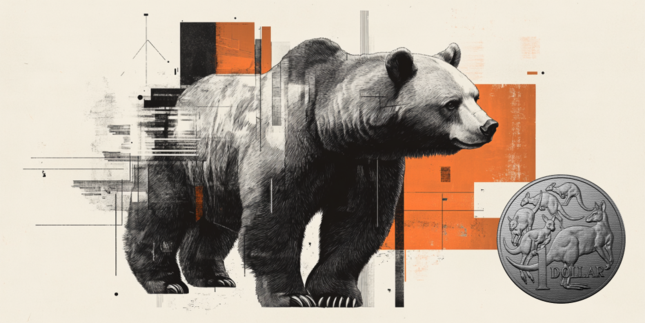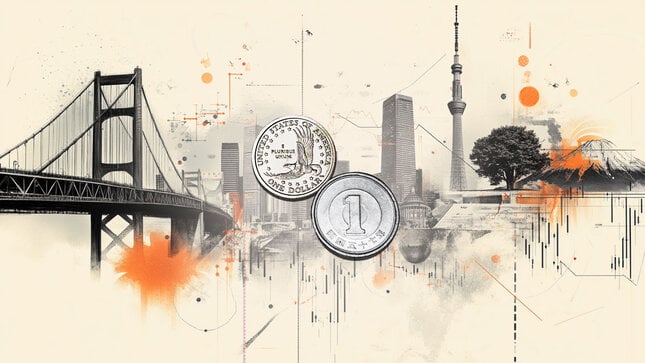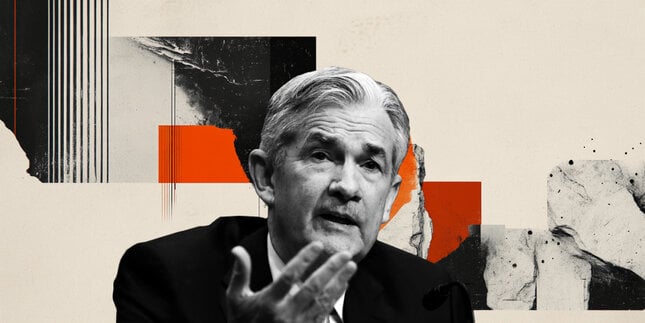In the aftermath of WWII the American economy was that shining city on a hill. After saving mankind from the Nazi’s, America had the only intact manufacturing base and was the repository for most of the world’s gold. Those circumstances propelled the US dollar to world’s reserve currency status. And for the past seventy years, this status has been the cornerstone for America’s power base and hegemony around the globe.
But the 1960’s ushered in a time of great fiscal mismanagement. President Johnson’s dual wars on poverty and Vietnam led to worldwide distrust about the greenback’s purchasing power in relationship to gold. This eventually led to Nixon’s baneful decision to close the gold window, which untethered the exchange between gold and the dollar.
The pillar of the dollar's dominance had been the 1944 Bretton Woods System that pegged global currencies to the dollar, which was in turn was linked to gold. After the Bretton Woods system was broken under Richard Nixon in 1971, Washington elites and OPEC created the Petrodollar system; where commerce in oil—and most commodities—was mandated to be conducted in U.S. dollars. Coupling the dollar to oil allowed the greenback and the United States to enjoy another forty years of King Dollar.
This dollar-dominance has given America a lot of discretion in running massive current account and fiscal deficits by enabling it to borrow money at much lower yields than would otherwise be the case without mandating foreign creditors to hold huge currency reserves.
But now the greenback’s role as the principal currency in which commodities are priced is being challenged. China is leveraging its rise as an economic power and consumer of hydrocarbons to displace the dollar's dominance in the Persian Gulf and in the former Soviet Union. This will have a deep impact on demand for the U.S. dollar, which will in turn impact yields on Treasuries--and should ultimately threaten America’s strategic position around the world.
In what is being billed as the most important Asia-based crude oil benchmark, China is launching a crude oil futures contract priced in yuan that will be convertible into gold. And this has a lot of significance given that China is the world's biggest oil importer. This move will allow exporters such as Russia and Iran to dodge U.S. sanctions. Not only this, but the contract will be fully convertible into gold on exchanges in Shanghai and Hong Kong. These Yuan-denominated gold futures contracts have been trading on the Shanghai Gold Exchange since April 2016; with a broader launch date set for the end of this year.
With China challenging the United States as a major player on the global energy scene, it is also making strides on internationalizing its currency. An increasing amount of China’s trade with other countries is now issued and settled in renminbi. To better accommodate this, The People’s Bank of China (PBOC) has implemented swap arrangements with over thirty other central banks. In other words, the renminbi is making moves to become a functioning reserve currency. In fact, the yuan recently joined the International Monetary Fund’s basket of reserve currencies.
The ramifications for the dollar and bonds are clear and inextricably linked. The Siamese twins of falling dollar and bond prices will greatly exacerbate the rise of U.S. borrowing costs that will already be underway due to the Fed’s reversal of QE, which will reach $50 billion per month by the fall of 2018.
The ill-fated, dollar-denominated Treasury market is set in stone. However, if you believe the Chinese currency will seamlessly replace the dollar as the world’s reserve currency, think again. The truth is that none of these fiat currencies can really survive for very much longer. Given the record amount of global debt ($230 trillion, 320% of GDP), there is destined to be a reset of all paper currencies to once again be backed by precious metals. The golden magic here is that the money supply will be commensurate with population and productivity growth and will therefore virtually guarantee that asset bubbles and unsustainable debt levels will become a relic of the past.
The catalyst for the next crisis will be the collapse of the gargantuan bond bubble that has been carefully constructed by central banks over the past nine years. Unfortunately, this will not be a proactive or voluntary reset. It will be forced upon us once faith in central banks is shattered as the next depression overtakes the worldwide economy. The negative ramifications from governments’ annihilation of free markets are soon to be felt.
ORDERS CANNOT BE TAKEN VIA E-MAIL. PLEASE CONSULT YOUR BROKER OR DELTA’S HOME OFFICE TRADING DESK AT (800)649-4554. Delta Equity Services Corporation e-mail system is for business purposes only. Messages are not confidential. All e-mail may be reviewed by authorized supervisors, compliance or internal audit personnel. E-mail may be archived for at least three years and may be produced to regulatory agencies or others with a legal right to access such information. Delta Equity Services Corporation does not represent or endorse the accuracy, timeliness or reliability of any of the information and/or opinions provided by registered representatives and third-parties. It is not a solicitation or an offer to buy or sell any public or private securities of any kind. PAST INVESTMENT PERFORMANCE IS NOT INDICATIVE OF FUTURE RESULTS. SECURITIES OFFERED THROUGH DELTA EQUITY SERVICES CORPORATION, 579 MAIN STREET, BOLTON, MA 01740, (800) 649-3883. MEMBER NASD, SIPC, AND MSRB.
Recommended Content
Editors’ Picks

AUD/USD recovers further to 0.6000 despite escalating US-China trade war
AUD/USD is building on its recovery from its lowest level since March 2020, retesting 0.6000 in Wednesday's Asian trading. The pair's upside appears elusive as officials confirmed that the US will proceed with a sweeping 104% tariff on Chinese imports starting this Wednesday.

USD/JPY: Japanese Yen strengthens further as recession fears boost safe-haven demand
The Japanese Yen continues to benefit from US tariffs-inspired global flight to safety. Hopes for a US-Japan trade deal further underpin the JPY amid sustained USD selling. The divergent BoJ-Fed expectations support prospects for deeper USD/JPY losses.

Gold price jumps back above $3,000 amid trade war threat to global growth
Gold price regains positive traction following previous day's failed attempt to surpass the $3,022-3,023 hurdle and retakes the $3,000 psychological mark during the Asian session on Wednesday.

Bitcoin, Ethereum and Ripple target $73,000 BTC, $1,300 ETH, and $1.30 XRP
Bitcoin price hovers around $76,200 on Wednesday after falling 3.59% the previous day. Ethereum and Ripple followed BTC’s footsteps and continued their downward trend.

The Fed is looking at a hefty price level
We are still in thrall to tariffs, the faux-macro “data” driving markets. The WSJ editorial board advised other countries to take their tariffs to zero so that Trump’s “reciprocal” tariffs will have to be zero, too. Cute, but no cigar.

The Best brokers to trade EUR/USD
SPONSORED Discover the top brokers for trading EUR/USD in 2025. Our list features brokers with competitive spreads, fast execution, and powerful platforms. Whether you're a beginner or an expert, find the right partner to navigate the dynamic Forex market.